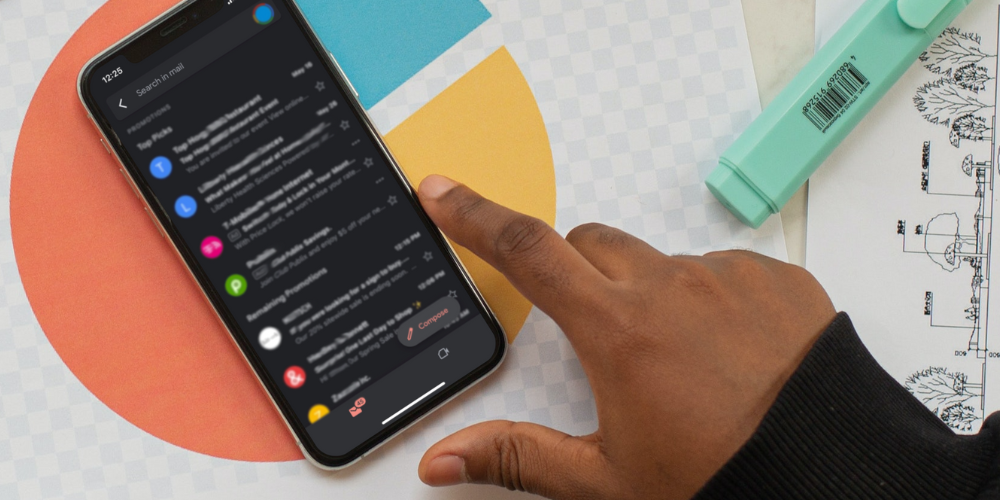
Nonprofit email subject lines: 3 tips to capture more opens
Email is a powerful tool for your nonprofit.
Your nonprofit’s emails can help you connect with your supporters and send relevant messages. The channel is relatively low-cost and is an “owned” channel that lets you engage with supporters without interference from third-party algorithms or paywalls.
Email can be a reliable channel to tell your story, inspire your supporters, build relationships, and grow your fundraising.
That is, if your emails get opened!
Before anyone can be wowed by your story or click on a donation link, they have to open the email. And in our busy world, oversaturated with messaging, a lot of people won’t.
Unless you give them a reason.
And your subject line is just that reason.
What does an email subject line do?
A subject line is an invitation to read your email. It’s the thing that convinces your supporter to take the first step and open your message.
From there, you can invite them to take a series of actions, like reading your content, clicking on a link, perhaps even making a donation.
The problem is that inertia is a powerful force. It is much easier not to open an email, especially if you’re busy.
So your subject line needs to entice the reader by clearly communicating that there is something they want to see inside your email. It must:
- Demonstrate relevance
- Spark interest
- Establish trust
And it needs to do all of that as quickly as possible, which makes it trickier than it seems.
Here are some common types of email subject lines that don’t hit all three points:
- Our end of the fiscal year campaign (Not very relevant)
- Nonprofit Org XYZ’s April Newsletter! (Not very interesting)
- Re: your email (Click-baity, doesn't inspire trust)
Consider instead:
- Make a splash! Support summer programs! (Relevant)
- S'mores, camp songs, and smelly feet… (Sparks interest)
- Refugees need your help, [First Name] (Personalized, trustworthy)
Three tips for your nonprofit email subject line
To immediately communicate to your audience that the message you’ve sent is relevant, interesting, and trustworthy, use these three tips to guide you as you write your subject lines.
1. Be clear, be brief
Before you jump into being clever or touching hearts, remember a few facts about the purpose of a subject line. It should:
- Let people know what the email’s about.
- Be 4–6 words long, and somewhere around 45 characters.
- Entice people to open the email.
It’s hard to entice people to open an email if the entire subject line doesn’t show up on mobile, they can’t tell who it’s from, or they don’t have some idea of what kind of email it is.
There's no good reason to be coy about fundraising emails. Someone who isn’t interested in giving probably isn’t going to change their mind if you trick them into thinking the email’s about something else — they’ll just lose trust once they open it.
Clarity is essential in showing you’re trustworthy.
2. Make it personal
Which email are you more likely to open? An email from your sister with the subject line, “Mom’s surprise party” or one from a nonprofit with a subject line like, “Support our capital campaign today!”?
The personal one, right?
Our friends and family don’t have to create great subject lines to get us to open their emails because of the personal connection we have with them. We already know we’re interested in what they have to say, and we know the message is for us, specifically.
Personalizing your nonprofit’s email subject lines can help communicate that the message is relevant. Adding a supporter’s name immediately captures their attention and makes your message seem just a little more important.
Personalization goes farther than just using names, though. It’s about speaking directly to your supporter’s interests and engagement with your organization.
Instead of one-size-fits-all communications that make supporters feel anonymous, personalized communications help supporters feel like they’re part of something.
Obviously, you can’t craft unique messages for every single one of your supporters. You may need to reach thousands of people! But with thoughtful segmentation, you can create groups of supporters that each get a special version of your message, with a carefully targeted subject line.
It’s common to segment communications by giving levels, but to be truly personal, you need to go farther. The amount of money someone has to give doesn’t reflect how or why they support your cause, but their behavior might.
Look at their involvement with your organization, the programs they’ve expressed interest in, and how they want to engage with you. You’ll find it easier to create personalized messages when using these personal details and traits to guide you.
For example, imagine you’re fundraising for an animal shelter and have identified that your supporters fall into two major categories: general animal enthusiasts and people who have adopted pets from your shelter.
Now imagine you can further divide the animal enthusiasts into two additional segments: cat people and dog people.
Now, you have three groups that can each have their own personal subject line:
- Meow! Shelter cats need you now
- Who doesn't love dogs?
- A special message for [Pet Name]
3. Attract attention
Your supporters get a lot of emails, and they may not even be expecting yours. Standing out in a crowded inbox can be challenging. Your subject line is your chance to capture attention.
Personalization will automatically help you attract attention, but there are some little tricks to help you, too, including:
- Asking questions (“How many books are in the bookmobile?” “Have you ever been lonely?” “What does music mean to you?”).
- Using an interesting fact, number, or stat (“What your 7,800 neighbors need” “Kangaroos can’t walk backwards; neither can we!”).
- Using “you/your/yours”
- Telling your audience if something is urgent or time-sensitive (“Your gift matched until midnight!” “Fill a backpack before school starts!” “3 days to the finish line!”).
- Using humor, as appropriate (“What’s a dog’s favorite instrument?” “Kick poverty's stupid face!”).
What’s that about open rates?
So once you’ve gotten the hang of creating relevant, interesting, and trustworthy subject lines, you’ll see your open rates soar and know your emails are working, right?
Sort of.
Once upon a time, open rates were a somewhat reliable metric of email engagement. Was it the strongest metric? No. But it was useful for gauging how many people were opening your emails.
Now, privacy changes have made the open rate number much squishier. Click-throughs are a better measure of your email’s effectiveness, but once again, before anyone can click anything, they have to open the email.
So while you shouldn’t take your open rate as absolute truth, you can still watch for big trends like, “Nobody opened this email,” or “Everyone opened this email,” or “We get more clicks when the subject line mentions a puppy.”
Basically, you’ll need to be more holistic in your approach to email metrics and look at the whole picture.
Starting from square one
Creating strong and compelling subject lines will help your email performance at each step, because opening the email is the step that comes before everything else.
So give it a try! Experiment and test your subject lines and see how they influence your nonprofit's email marketing efforts.
About the author:
Megan Donahue is a communications consultant, writer, and nonprofit nerd. She's the host of Love & Robots and fascinated by the intersection of nonprofits and technology.
You May Also Like
These Related Stories

Five steps to writing more compelling fundraising emails

Nonprofit email marketing: A complete guide
